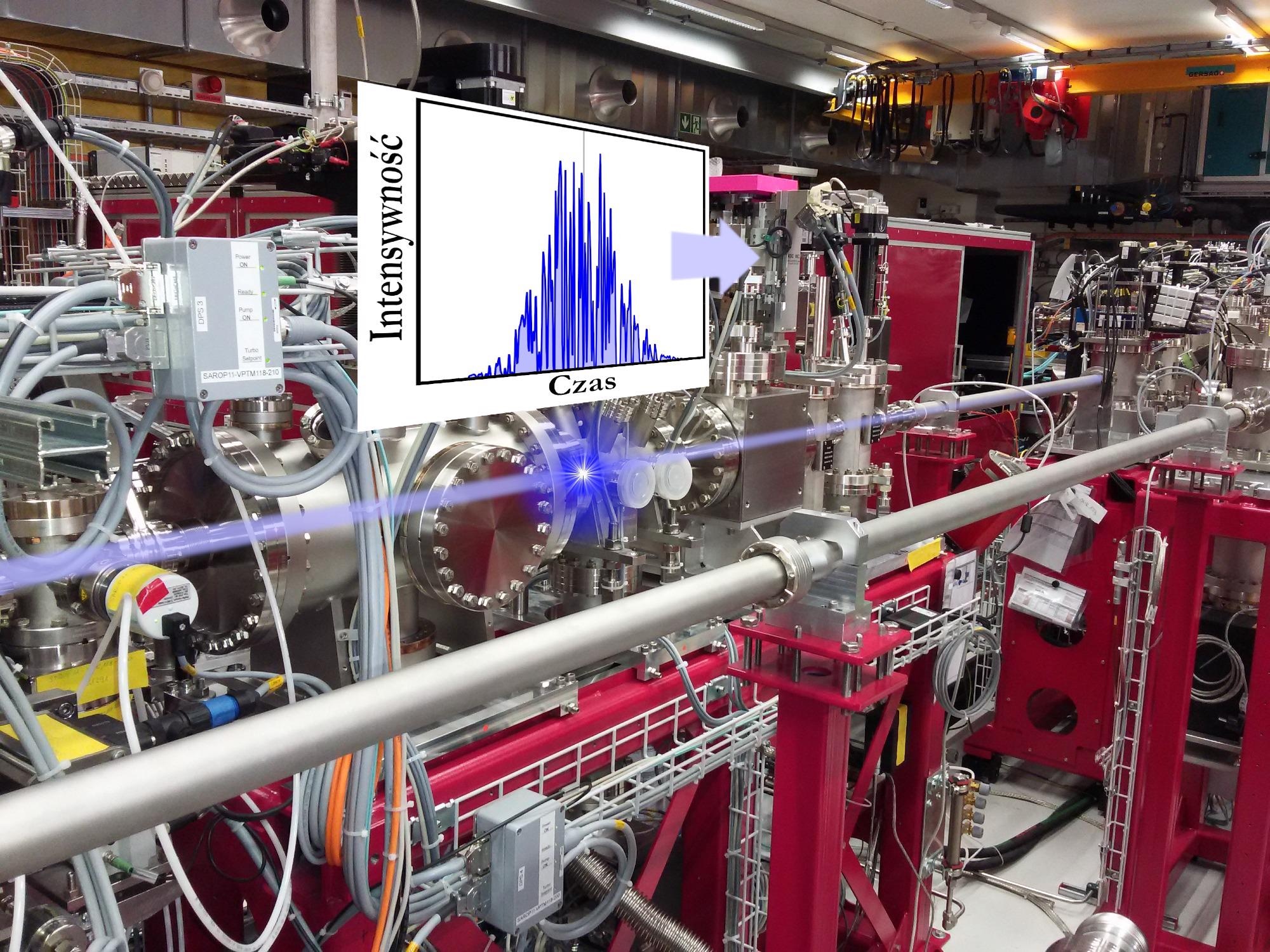Reviewed by Alex SmithMay 10 2022
The heart of chemistry and biology is phenomena that last trillionths of a second. They are everywhere. The world has only recently started trying to document their real path, with mixed results. However, Cracow scientists have demonstrated that a new window into the realm of attophysics can be constructed, providing a promising picture.
 Attosecond phenomena can be studied with free electron lasers such as SwissFEL (the photo presents its research station Alvra). X-ray chronoscopy, which analyzes the shape of laser pulses before and after interaction with the sample, can potentially provide the most accurate image of these phenomena. Image Credit: IFJ PAN/Paul Scherrer Institut/SwissFEL Alvra
Attosecond phenomena can be studied with free electron lasers such as SwissFEL (the photo presents its research station Alvra). X-ray chronoscopy, which analyzes the shape of laser pulses before and after interaction with the sample, can potentially provide the most accurate image of these phenomena. Image Credit: IFJ PAN/Paul Scherrer Institut/SwissFEL Alvra
Chemical processes involving changes in the arrangement of electrons in atoms and molecules happen quickly, whether in the depths of a cell or inside a test tube. Their frequency and significance are in the interest of scientists, who have long attempted to track their evolution over time.
Current X-Ray technologies, designed to see processes lasting attoseconds (trillionths of a second), place huge demands on the characteristics of the radiation beam utilized.
The situation is expected to improve in the future years, according to a new measuring method presented by a group of scientists from the Polish Academy of Sciences’ Institute of Nuclear Physics (IFJ PAN) in Cracow.
X-Ray Free-Electron Lasers (XFEL). have made it feasible to track the progress of events as quickly as the bonding of atoms into molecules. Due to their size and construction costs, these devices are only used in a few sites throughout the world. They produce ultra-short X-Ray pulses that last only a few femtoseconds (i.e. billiardths of a second).
X-Ray spectroscopy and X-Ray diffraction are two primary measuring methods used in XFEL laser-equipped centers. The former examines changes in the radiation spectrum as it interacts with the sample, whereas the latter investigates how X-Rays scatter on the sample.
Both approaches have similar drawbacks: seeing processes that are shorter than the pulse duration is not possible with them. This is why, with the European XFEL laser near Hamburg, for instance, the fastest events seen so far lasted 5 femtoseconds.
A few femtoseconds is not very long, but this is still not the world of attophysics. In order to get to this, we turned to chronoscopy, that is, a technique that analyses how pulses change their shape over time. We have shown theoretically that this method can be successfully used for ultrashort X-ray pulses to gain information about the changes in the shape of the pulses before and after interaction with the sample.
Dr. Wojciech Blachucki, First Author, Institute of Physical Chemistry, Polish Academy of Sciences
It is demonstrated in this paper that it is feasible to measure the temporal structure of ultra-short laser pulses, i.e., to gain information on the pulse shape. Even at the current stage of technological development of XFELs, this technique has the ability to deduce phenomena from the domain of attophysics.
It would be conceivable to detect phenomena occurring at a time of 20/100 = 1/5 femtosecond, i.e. 200 attoseconds, if the laser pulse lasted even 20 femtoseconds and the information about its temporal structure can be reconstructed in 100 points.
It is worth noting that, at the moment, temporal resolution of less than one femtosecond is possible, but the laser beam’s strength must be greatly lowered. This technique has a bunch of negative consequences.
The time it takes to irradiate samples is increased to many hours, making it hard to conduct practical experiments. This constraint is not present in X-Ray chronoscopy, which eliminates the need for radiation pulses by employing a sensitive way of determining their temporal structure.
Following its deployment, present laser centers might devote a portion of their work time to attosecond measurements for other organizations, such as industry.
Nevertheless, it will take several years before X-Ray chronoscopy becomes a typical study approach. Demonstrating that the average duration of the laser pulse before and after interacting with the sample are different will be the first step toward its implementation.
This would be an experimental verification of the accuracy of the Cracow-based physicists’ technique. The researchers would only focus on a more detailed reconstruction of the temporal structure of impulses before and after contact with the material at a later stage.
The measurement technique we propose is not limited only to free-electron lasers, but is universal in nature. Thus, it can be successfully used also in the case of other sources generating ultra-short X-ray pulses, such as the Extreme Light Infrastructure facility located near Prague.
Dr. Jakub Szlachetko, Institute of Physical Chemistry, Polish Academy of Sciences
Scientists from Stockholm (KTH Royal Institute of Technology), Uppsala (Uppsala University), Villigen (Paul Scherrer Institute), Schenefeld (European XFEL GmbH), and Warsaw (Institute of Physical Chemistry of the Polish Academy of Sciences-IFJ PAN) contributed to the research of the IFJ PAN group. The study was supported by a grant from Poland’s National Science Centre.
Journal Reference:
Błachucki. W., et al., (2022) Approaching the Attosecond Frontier of Dynamics in Matter with the Concept of X-ray Chronoscopy. Applied Sciences. doi.org/10.3390/app12031721.